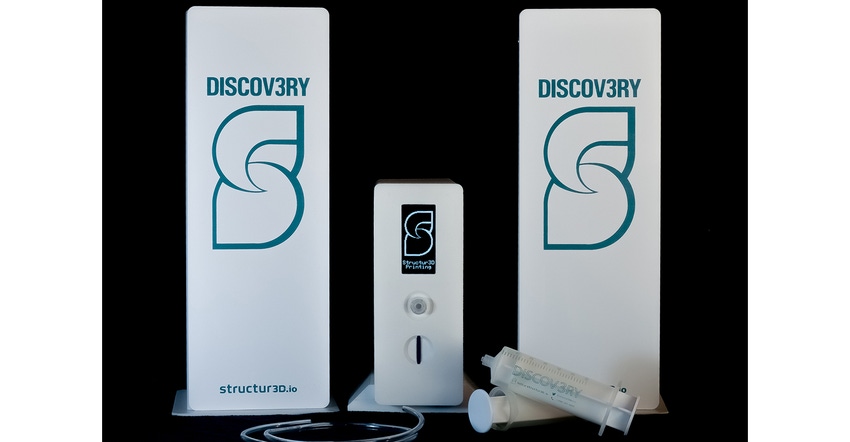New Platform Combines 3D Printing and Injection Molding to Produce Flexible Parts
Stanley Black & Decker partnered with Structur3D to develop the Inj3ctor platform.
February 9, 2021

Structur3D, an innovator in the advanced additive manufacturing market for soft materials based in Kitchener, ON, Canada, has partnered with Stanley Black & Decker on the development of a desktop solution for injection molding soft materials. Structur3D and Stanley worked together during development of the Inj3ctor platform to identify the needs of large-scale manufacturers with respect to rubbers and silicones. Structur3D now has launched the Inj3ctor platform, which injects 3D-printed molds with factory-grade liquid materials to create flexible parts.
Working with Stanley engineers, Structur3D was able to identify areas of focus related to custom gaskets and product development for industrial tools. The ability to move through the product development process with the materials that are used in final production allowed for increased accuracy and efficiency. With Stanley’s input, the Inj3ctor platform was created with the purpose of replacing short runs or very manual processes that currently exist in industrial manufacturing.
Inj3ctor technology combines the principles of injection molding and 3D printing. Currently, 3D-printed rubbers fail to meet necessary manufacturing standards, which has held back the rubber industry from finding a seat at the table, explained Structur3D. The Inj3ctor platform brings desktop injection and 3D printing together to deliver a feasible solution for manufacturing functional parts. This approach, combined with professional-grade materials, means the models are viable for every step of manufacturing, from prototyping to production.
The technology specifically helps small-batch manufacturing, as it reduces the cost and procurement risks for manufacturing rubber parts. Manufacturers typically either hand-cast the parts or invest in expensive mass production tools, if they don’t choose to forgo the part altogether in design. This is important as larger manufacturers begin exploring the future of producing custom and on-demand products for consumers, impacting a swathe of industries including automotive, industrial, aerospace, energy, and medical as well as various consumer applications such as footwear, where the buyer customizes some portion of the design.
Structur3D explained that as larger manufacturers seek to satisfy demand from consumers for custom products, they will face new challenges to create high-quality products. 3D-printing alone is not enough to develop factory-grade flexible parts. Product developers can design a hyper-detailed mold using standard CAD software and 3D print the part with standard, durable, or dissolvable plastic. Then users can choose from tens of thousands of liquid rubber materials, customizing the product based on desired durability, flexibility, and cure time. After programming the mixing ratio and injection volume, Inj3ctor fills in the mold, creating a fully customized, flexible product.
A spokesperson for Stanley said that there may be applications for additional thermoplastic elastomers; the company is currently working with Structur3D on rubber products.
About the Author(s)
You May Also Like



